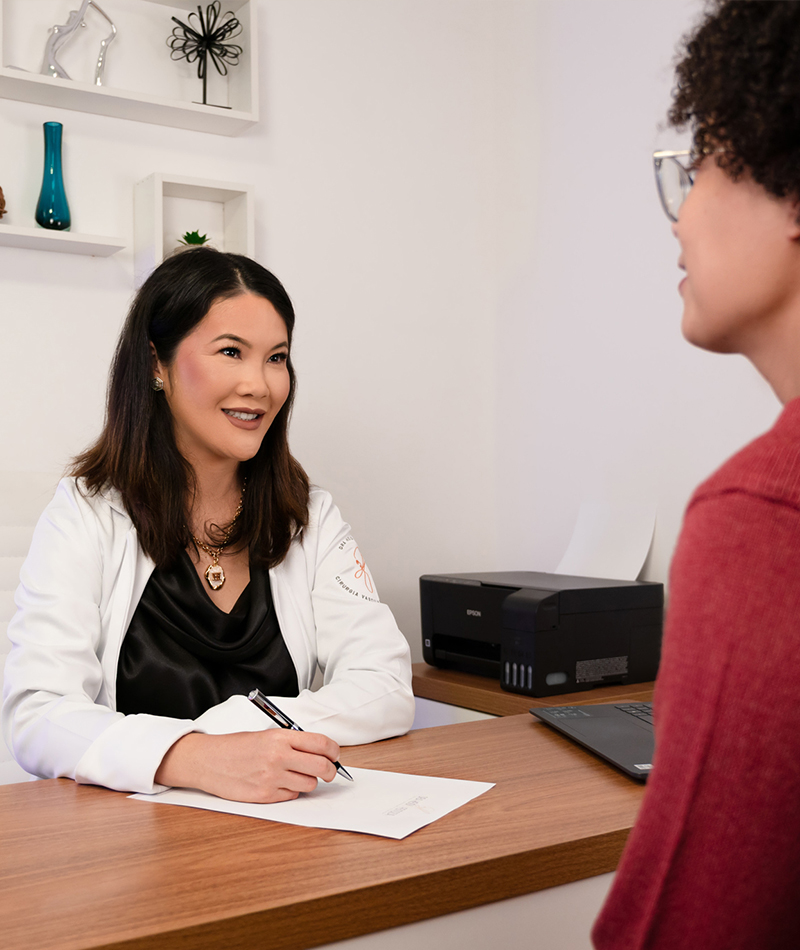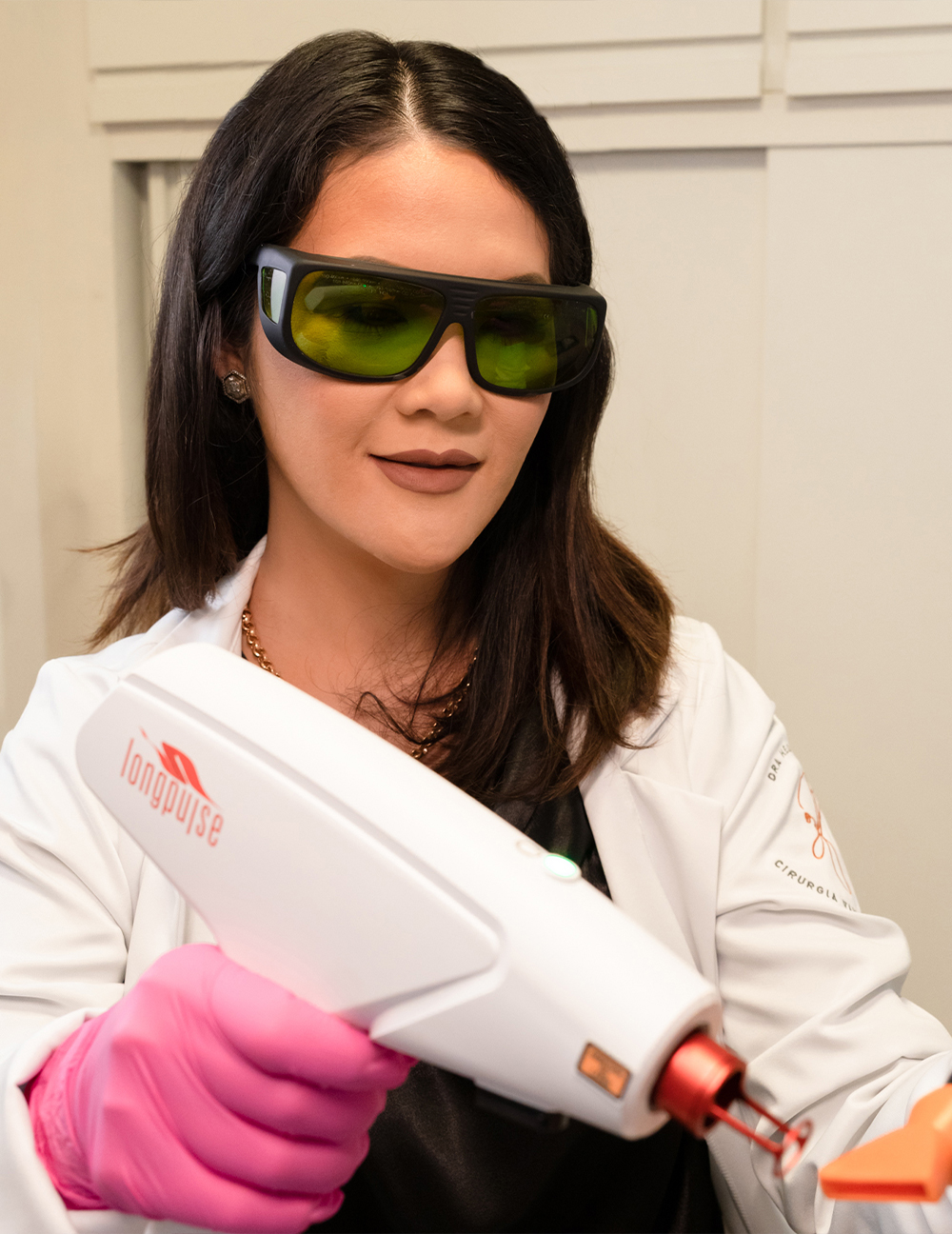Honored to be your doctor
Dr Heidi Feitoza
CRM: 149546
RQE: 73037 Vascular Surgery
RQE:73036 General Surgery
Vascular Surgeon Physician with a Specialist Title from the Brazilian Society of Angiology and Vascular Surgery.
Head of the on call team in vascular surgery at Hospital São Luiz do Morumbi.
Accredited throughout Rede D’or, Vila Nova Star Hospital for elective and urgent surgical treatments.
Areas of greatest interest: technological advances, especially in the treatment of varicose veins and endovascular surgeries.

Varicose vein surgeries
Vascular accesses
Endovascular procedures

Vascular Check-up
The vascular check-up aims to assess the risk of arterial or venous thrombosis and screen for vascular diseases such as venous insufficiency, aneurysms of the aorta and other vessels, pelvic varices, among others.
It is performed through a medical consultation with a vascular surgeon who uses the Doppler ultrasound device during the consultation to assess anatomy, wall and blood flow in different parts of the body. Here are the main Doppler exams that are performed:
Carotid and Vertebral Doppler
These cervical blood vessels are responsible for the proper functioning of the brain. His analysis stratifies the risk of stroke (stroke, or stroke) and the presence of fatty plaques may indicate an increased risk of myocardial infarction.
Lower Limb Venous Doppler
Aorta and Iliac Doppler
Doppler cava and Iliac
Lower Limb Arterial Doppler

Varicose veins
Varicose veins are veins that over time swell because they lose their function of returning blood to the heart. This happens due to the loss of strength in the wall (musculature) and also due to defects in the valves that should help the blood to overcome gravity. These two things generate accumulation of blood in the affected region (legs, pelvis, scrotum, esophagus, etc).
Treatment depends on the affected body region. The main types of varices are in the legs. The vascular surgeon uses augmented reality and the Doppler device to study the entire affected venous network and then schedule the most appropriate treatment.
The venous network in the legs varies a lot from person to person, so the treatment must be done in a individualized way. The number of sessions, follow-up time and the most suitable type of treatment can vary a lot for this reason. In addition, the patient’s general health status is also taken into account when indicating a type of treatment.
Procedures
Laser varicose vein treatment
Treatment of endovascular abdominal aortic aneurysm
Treatment of endovascular carotid stenosis
Endovascular Pelvic Varicose Treatment
Placement of vascular accesses for chemotherapy or taking medications
Hemodialysis accesses
Pediatric Access
Traditional or laser lower limb varicose vein surgery
Aesthetic medicine:
Botulinum Toxin
The use of the toxin in order to prevent, treat or alleviate expression lines, bringing lightness to the face. The facial biomodulation technique uses the toxin to make small changes in the shape of the face. Furthermore, they are also used to treat bruxism.
Laser treatments
Through ablative and non-ablative technologies, it is possible to improve the skin, bringing texture and color uniformity.
The main protocol is the GEMINI (ndyag laser and qswitch): a non-ablative procedure without the need for rest that stimulates collagen production and alleviates blemishes.
In winter, the demand for ablative treatments for facial cell renewal increases. The fractionated erbium 2940 laser removes the aging skin layer while stimulating collagen production.
The qswitch tip is used in the clinic to treat blemishes, as part of melasma protocols and also to remove tattoos.
Other laser treatments: onychomycosis (nail mycoses); rosacea, varicose veins.
Facial Matching
It involves the use of technologies, butolin toxin, filling, PDO threads in order to rejuvenate or modulate the face.

